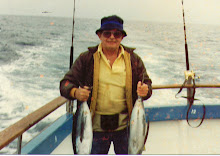
Yesterday was Thursday, March 6, and I drove my daughter, Eva Marie, to Grand Island, NE, (just over 100 miles away, population 50,000) for an appointment with an epilepsy specialist. Much of that drive on I-80 runs parallel to the Platte River and we were treated to views of endless flocks of migratory birds as they traveled to and from the river.
The Platte River is not typical of what most of us see in our mind's eye when we hear the word "river". It meanders gently across the landscape from its origins in Colorado to its merger with the Missouri River. It is broad and shallow with literally hundreds of small islets dotting its course. Those islets, which a westerner would refer to as sandbars, provide the reason for the Sandhill Crane to rest and "refuel" in Nebraska.
The vast numbers of the Sandhill Cranes that visit here are of the subspecies referred to as the "Lesser Sandhill Crane", lesser denoting that this is a fairly small crane and weighs 7 to 9 pounds at most. Yesterday we saw literally thousands of them in different flocks moving to and from the river. It took a conscious effort on my part to keep my eyes on the road while driving instead of trying to watch the show up in the air. Just to keep things interesting, there were also large flocks of geese and ducks moving from the feeding areas to water sanctuaries. For the Cranes, the Platte offers nighttime protection from coyotes, foxes, bobcats, badgers, black bears and the occasional cougar. Bald eagles have been known to go after some of the smaller cranes, and we have plenty of those eagles in the area (Fish and Game officials counted 63 bald eagles at Harlan County Lake this winter).
Many of the farmers in the area are less than thrilled to see their fields covered with cranes during the daylight hours. Cranes, of course, love to eat grains and if some of those grains are newly planted seeds, so much the better. The winter wheat, of which I wrote in an earlier posting, is starting to sprout and cranes love the green leaves. If it were just a few cranes, the farmers wouldn't be concerned at all, but a total migratory population of 600,000 seed eating waterfowl can do a lot of damage. There is not much the farmers can do, since Nebraska is the only state in the U.S. that does not allow the hunting or taking of cranes. Most of the birds will stay on the Platte for about a month, leaving in early April for Northern Canada, Alaska and Northeastern Siberia, where they will nest and lay their eggs.
 This is a Whooping Crane, of the rarest and most endangered birds in the world, and if luck is with me I will see one or two of these magnificent creatures when I visit the Rowe Sanctuary on my crane watching day.
This is a Whooping Crane, of the rarest and most endangered birds in the world, and if luck is with me I will see one or two of these magnificent creatures when I visit the Rowe Sanctuary on my crane watching day.In 1941 there were only 21 Whooping Cranes alive in the wild. Today, that number is close to 600, but its continued existence is still very much in doubt. It is much larger than the Sandhill Crane, standing 5 feet tall and weighing 18 to 22 pounds on the average. I have read about the efforts to save this bird since I was 12 years old, and if I am sufficiently blessed to see one living in the wild as nature intended, I will consider that one of the highlights of my 73 years.




No comments:
Post a Comment